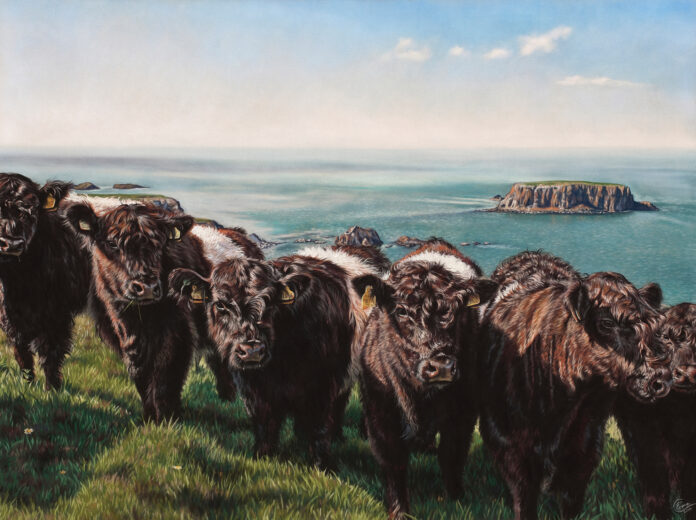On Painting Animals with Pastels > The following is part of a series featuring a leader in the art community who will be joining us on the faculty of Pastel Live, a virtual art conference taking place September 18-20, 2024.
“I work in a realistic style but always aim to create a painting with more depth and vibrance than the photo reference,” says Emma Colbert. “I spend my time working on people and pet commissions, as well as my own series of wildlife and landscapes.”
Step-by-Step Demo of “The Belties”
By Emma Colbert
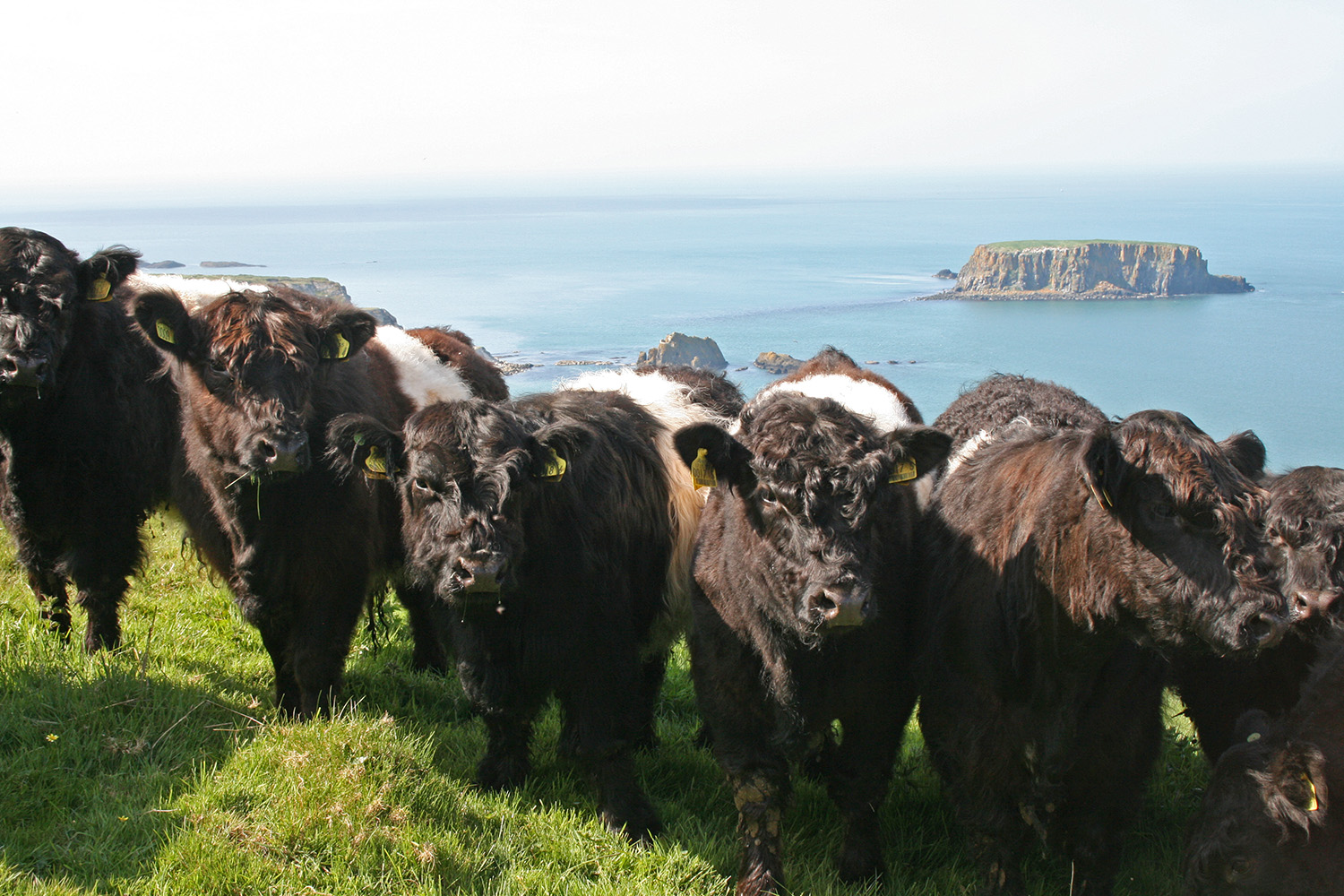
1. I went to photograph these gorgeous animals at their rural home on the North Coast of Ireland. The backdrop and lighting were just as they were on the day, fresh! This is the reference photo I took. I had very little to change; I liked how a couple of cows were cut in half and I just removed the cow on the bottom right as I thought he didn’t add anything.
***
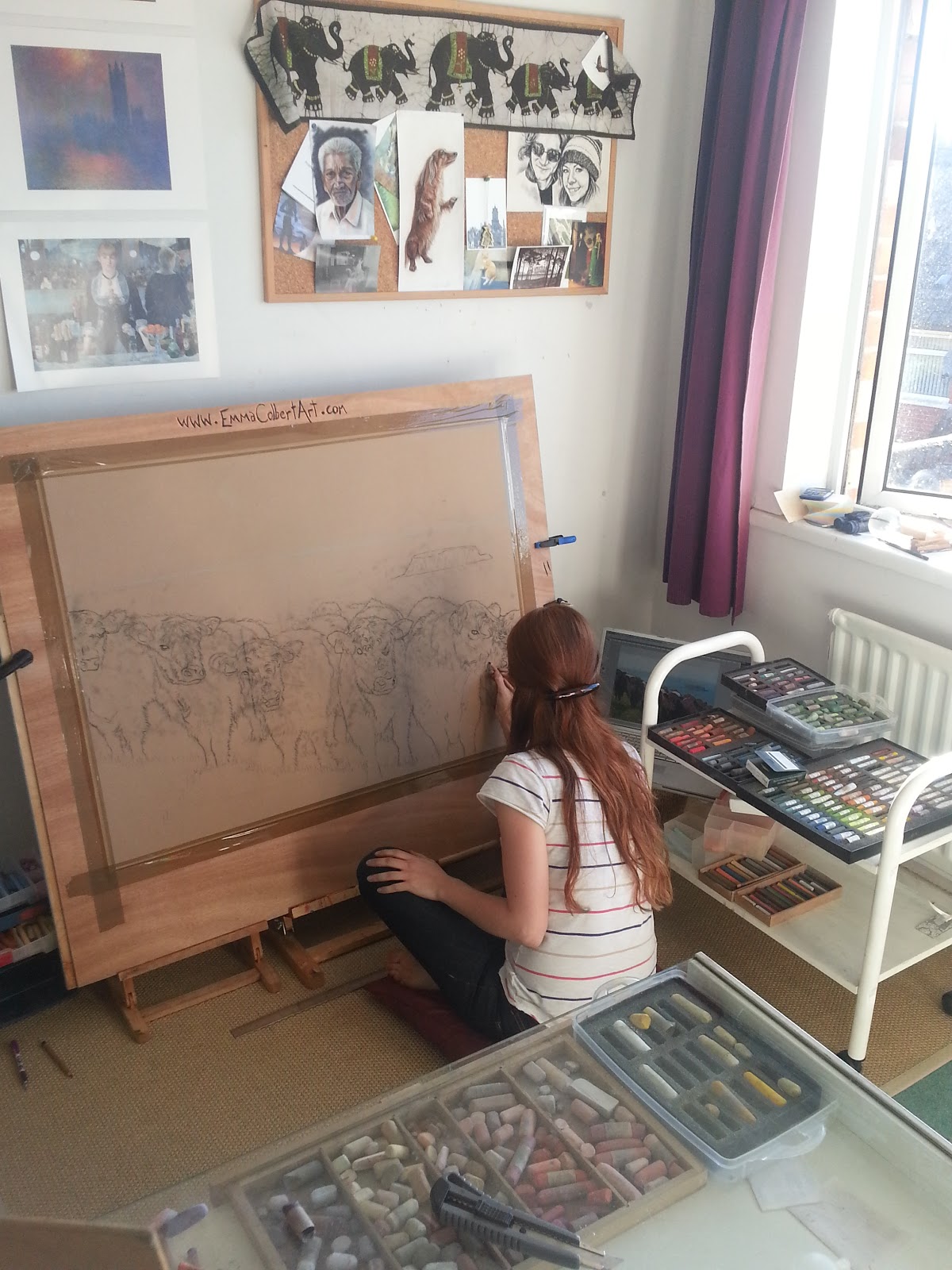
2. I sketched this out smaller and used a grid to help with the initial masses. I don’t mind having to use a grid when it’s something this complex. It certainly speeds this part up a little as I can get proportions a little easier. While good drafting is important I like the actual painting process the most.
***
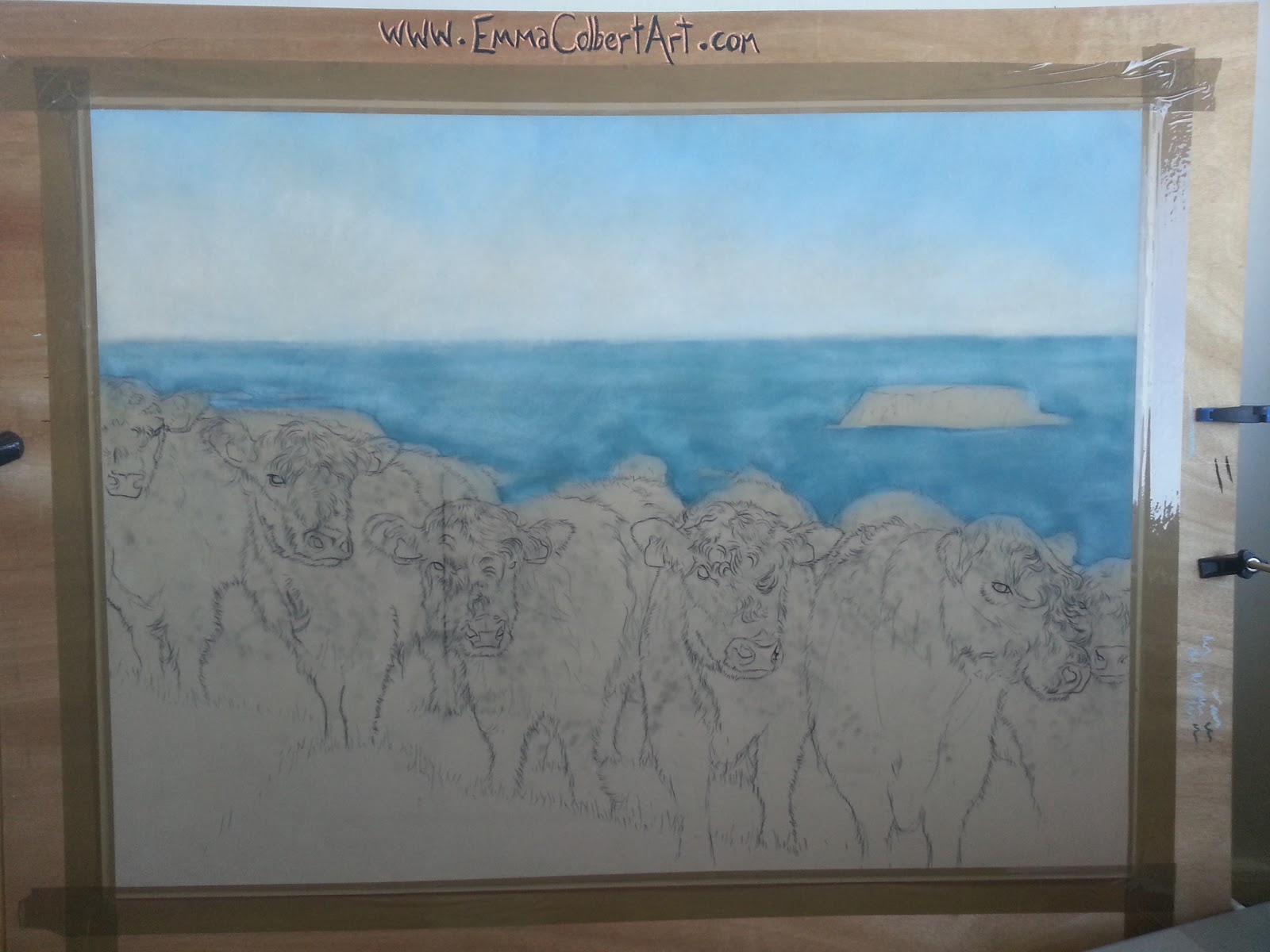
3. I’ve blocked in the large areas of sky and sea. It’s taken a long time to get the gradient to smooth out and there’s still a lot of layering and blending to do.
***
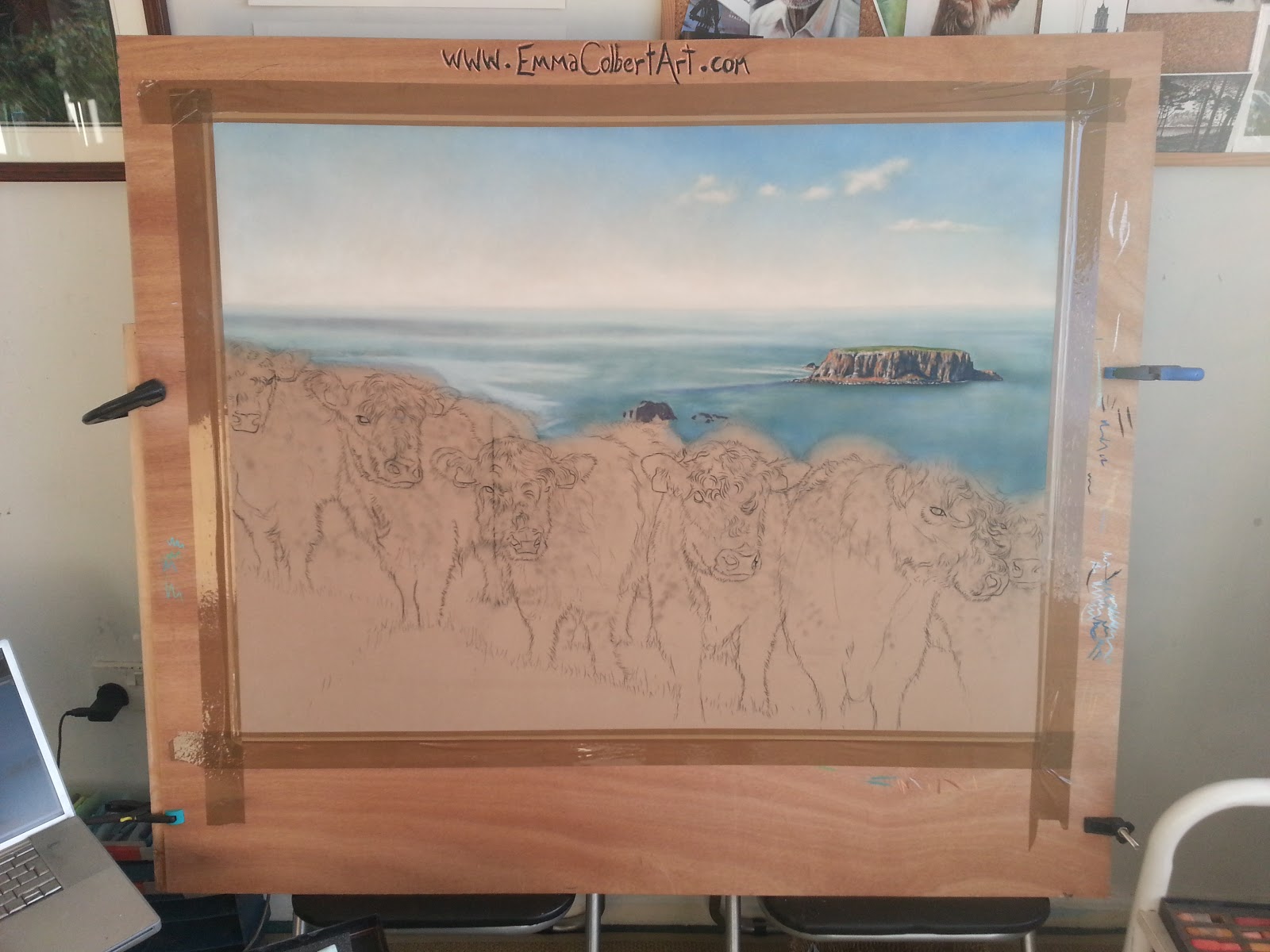
4. Lots more work on the sky done. I’ve used some other reference photos from that day to add a little interest to the sky but left it quite misty. The sea is still quite flat looking but the island adds a surreal feel to this piece I think. It’s a great bit of coastline up there!
***
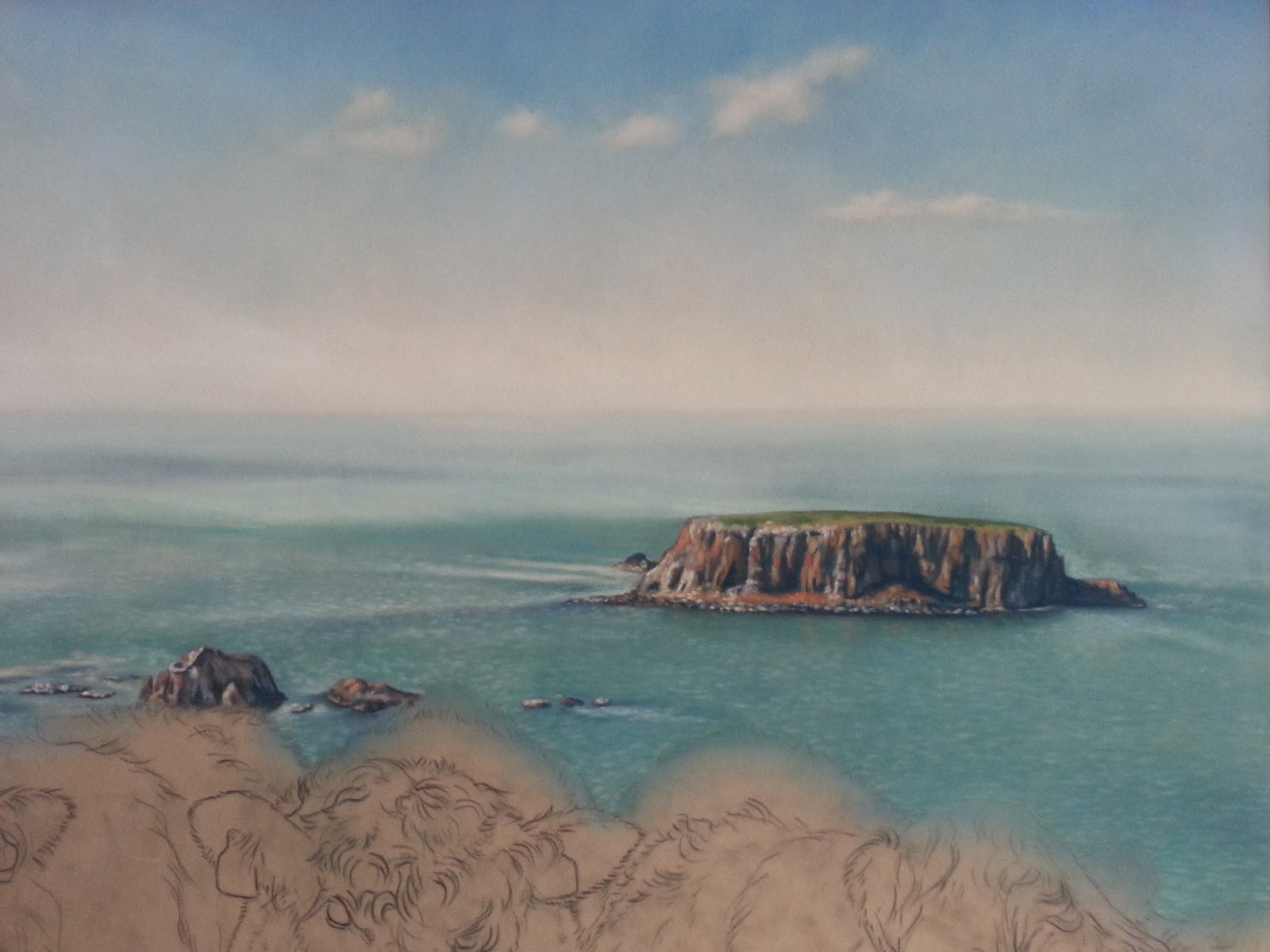
5. I’ve added a bit more movement to the water with small marks of orange and blue and tried to add a bit of reflection on the water in front of the island.
***
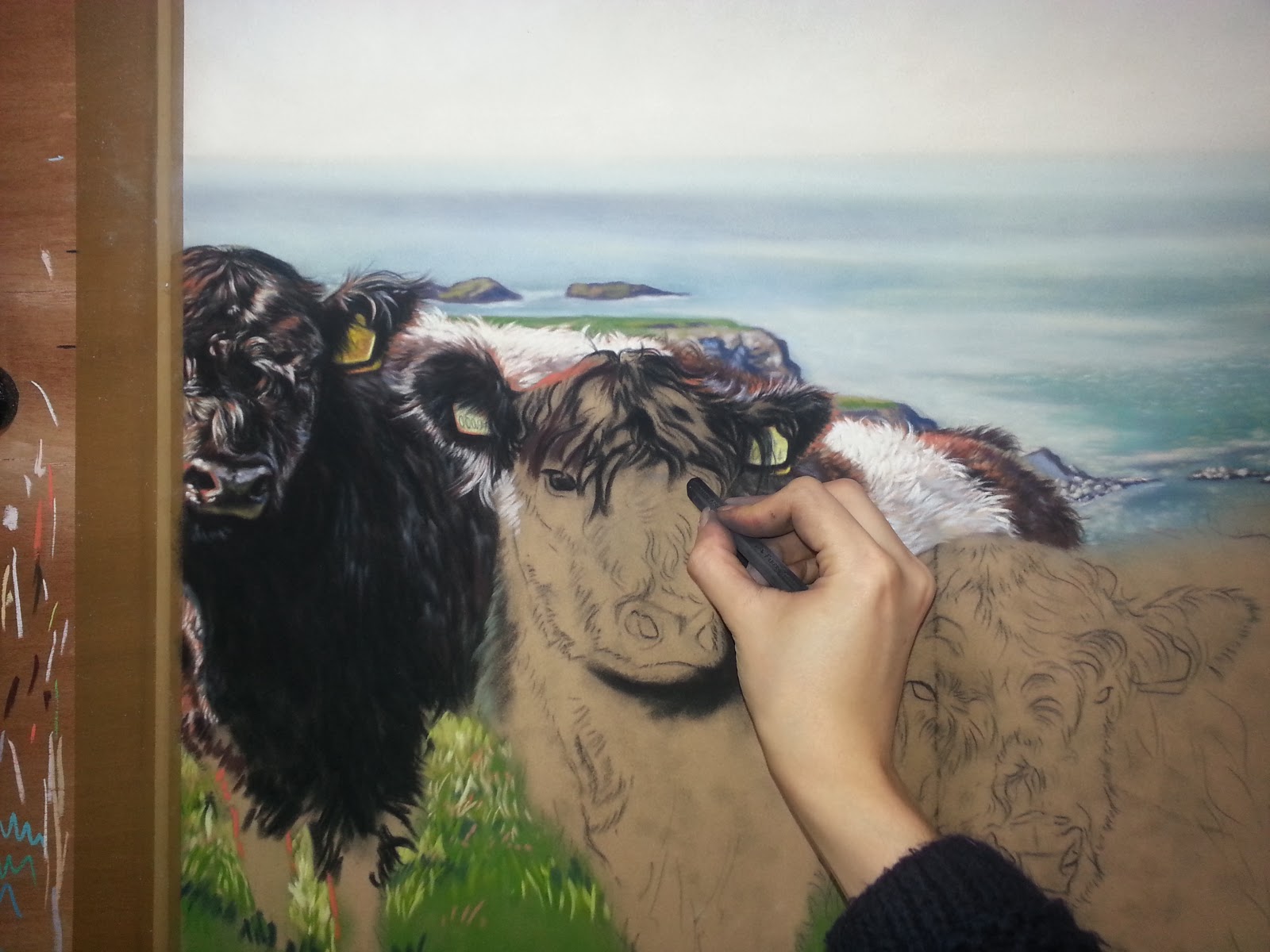
6. It makes sense to work from left to right so I’m not working on top of what I’ve done. I’m using a lot of Faber Castell black sticks for this piece as it’s really jet black and I want the contrast to be really high between the dark shadow areas and the sunlit areas.
My palette consists of the black Faber Castell, and a selection of Unison pastels along with some Faber Castell Pitt pastel pencils. In the black areas of the cows I use a really vibrant orange with a selection of lighter oranges for highlights, a nice blue violet and some lighter violets for highlights in shadow areas. The very lightest areas on the cows’ backs are the brightest greys like Grey 26 or 27 which have a warm yellowy look to them which is not as stark and cold as pure white for these highlights.
***
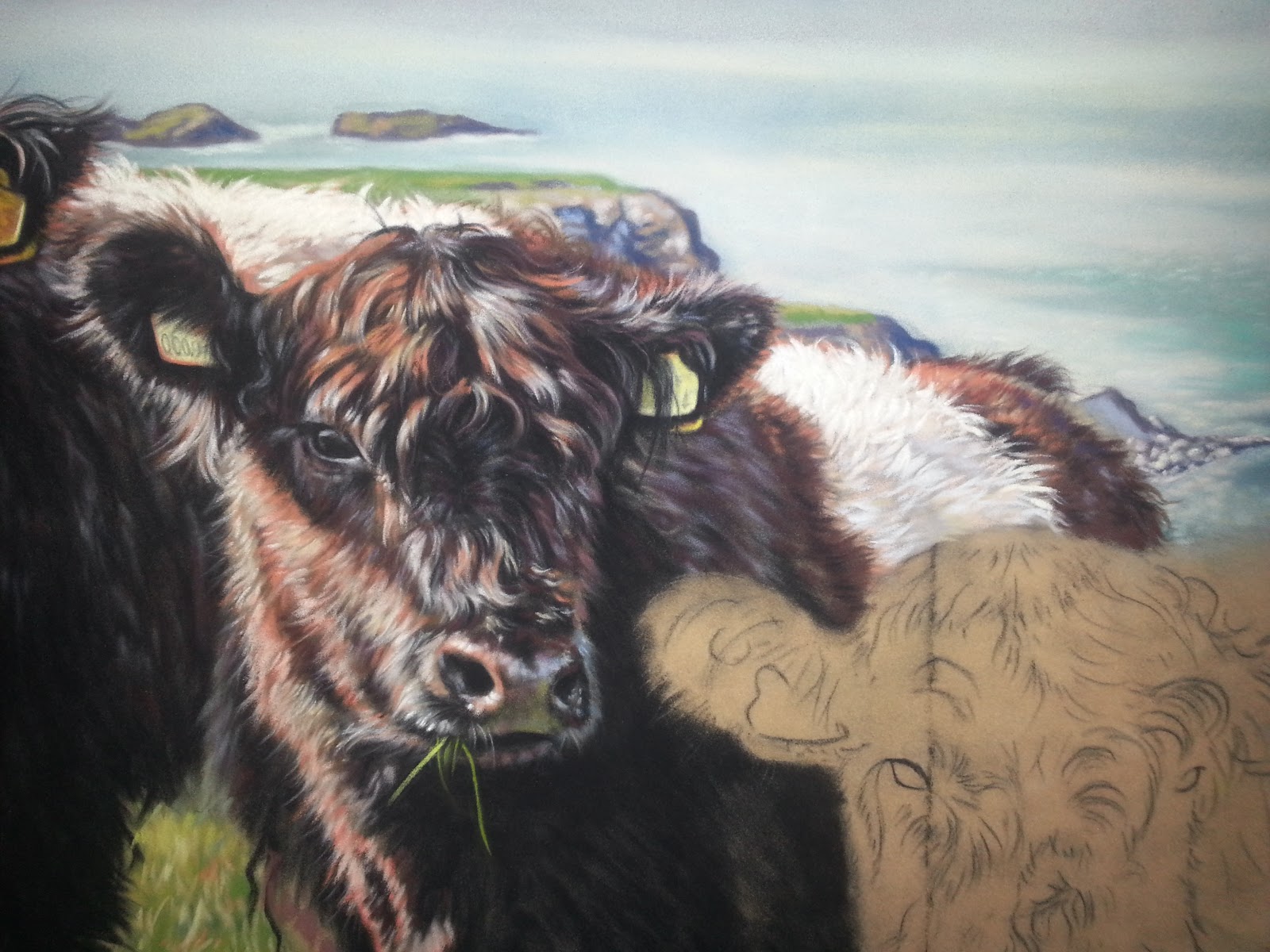
7. Close-up of this second cow finished. The underside of their noses is green as their wet noses were reflecting all that green grass. This one was having munch too. I thought that was some good posing so included it!
***
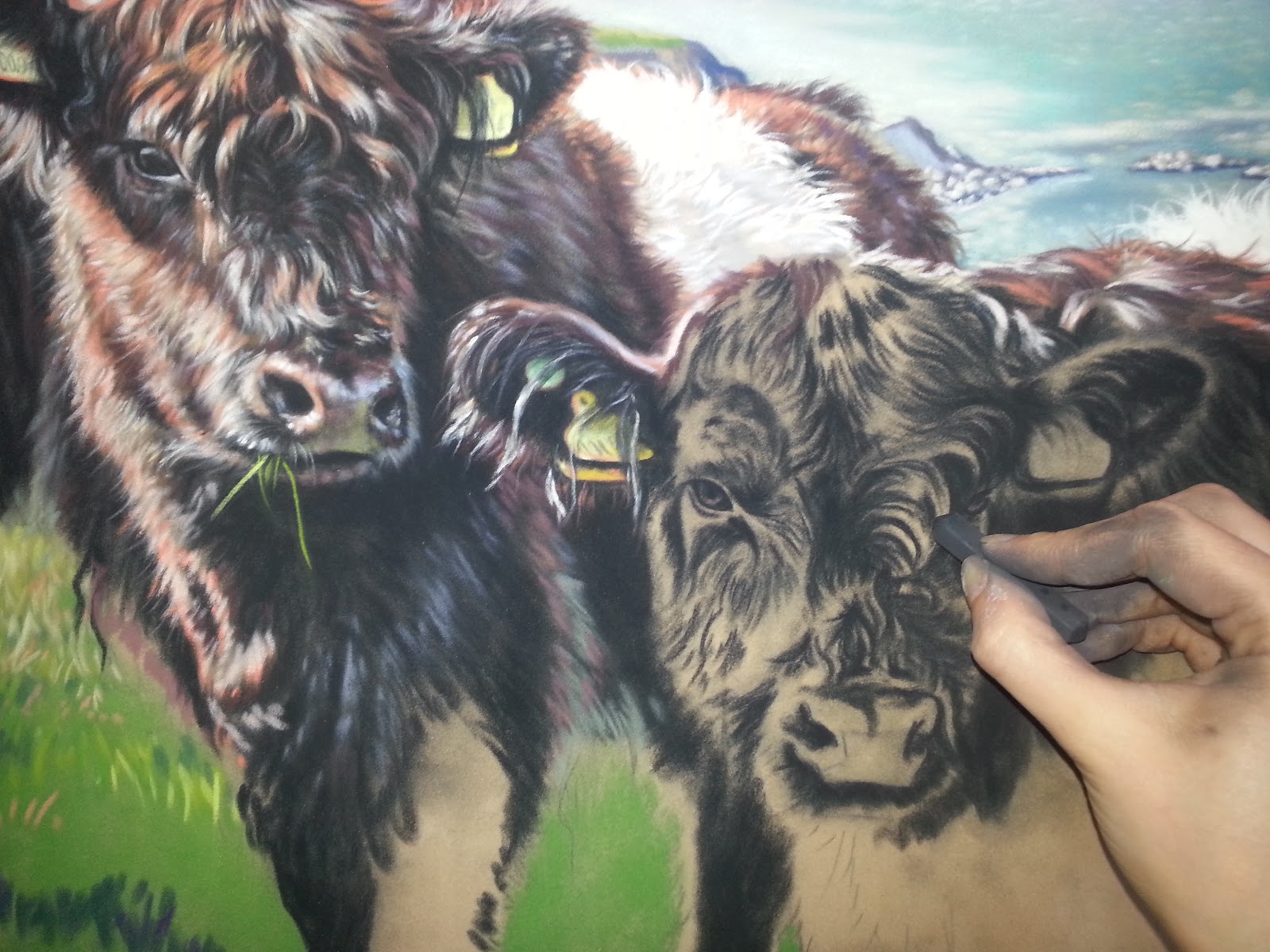
8. This is where I begin building up the fur. Using the black stick I loosely sketch in all the curls and main hair direction. I also block in any really dark areas or areas in shadow.
The next colours I’ll add are the deep purply brown with the vibrant orange. Then I start marking in some of the highlight areas both in sun and shadow. Pastel pencils I use to flick the ends of the hair and get really small hairs around the edges.
Each cow done this far has taken an entire day. Probably about 8-10 hours some days. This scale requires so much more time. I’d like to try some looser work on this scale perhaps but I wanted this piece to be as detailed all over as my previous smaller work. So just some patience is required and that’s ok.
(Continue seeing the development of “The Belties” at Emma’s website, emmacolbertart.com, and find information on commissioning a painting.)
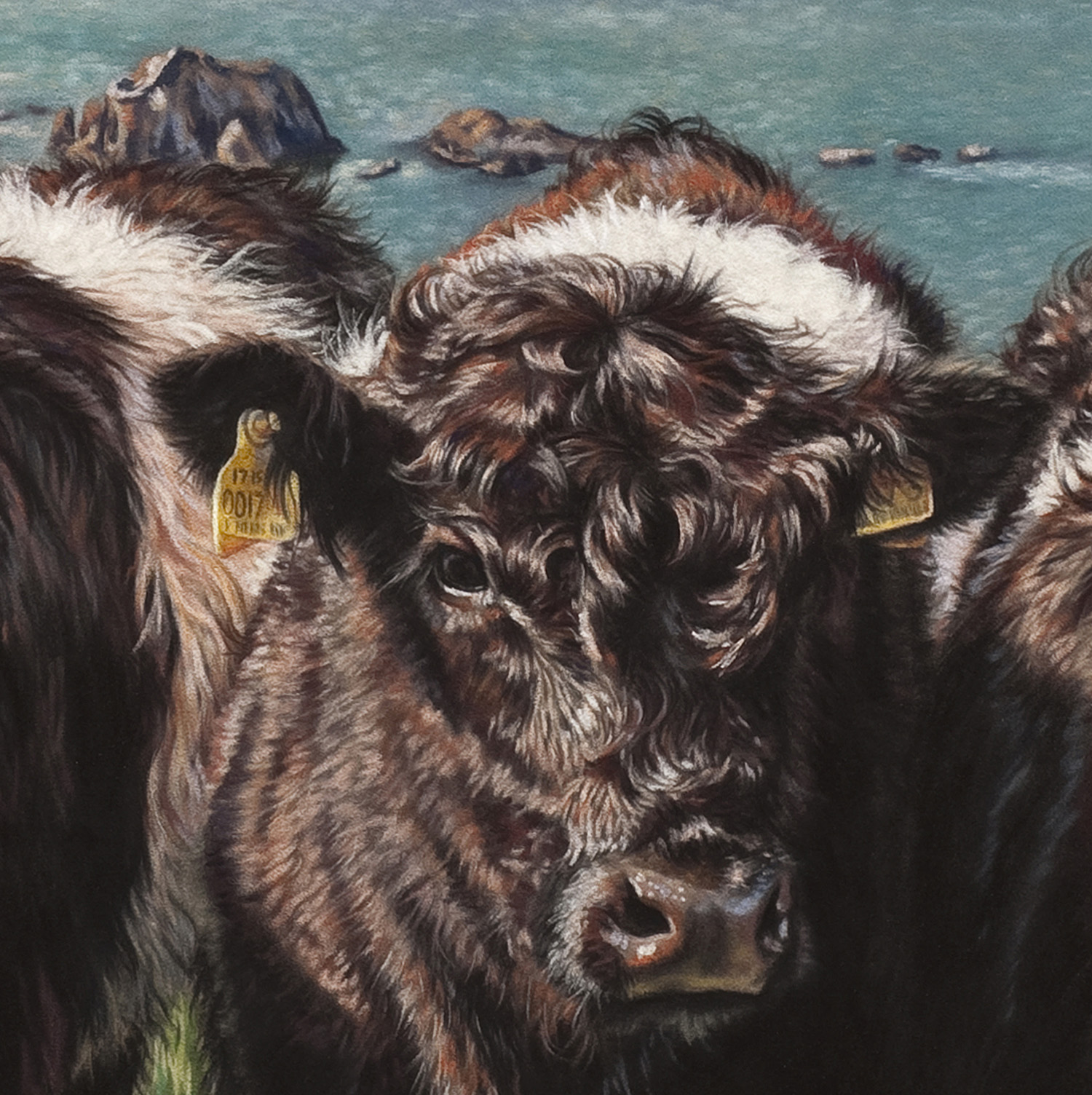
I find such joy in capturing an animal’s personality but also find joy these days painting the chair a dog is on, or a windowsill in the sunlight. It’s always about capturing that light convincingly.
I also love painting people, be it a special wedding moment, or a child’s portrait. It’s an entirely different challenge to painting animals, but I find pastel to be the perfect medium for both.
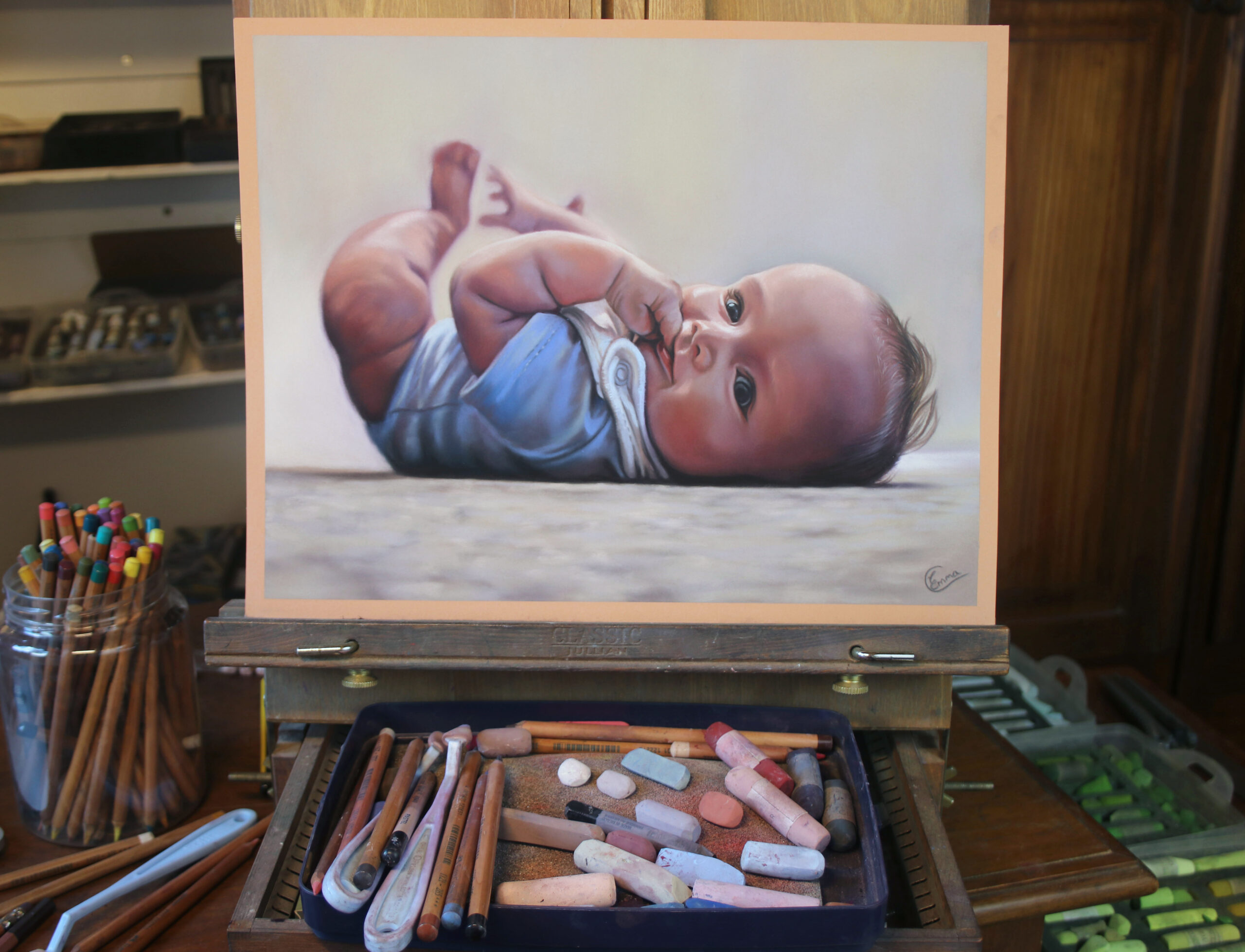
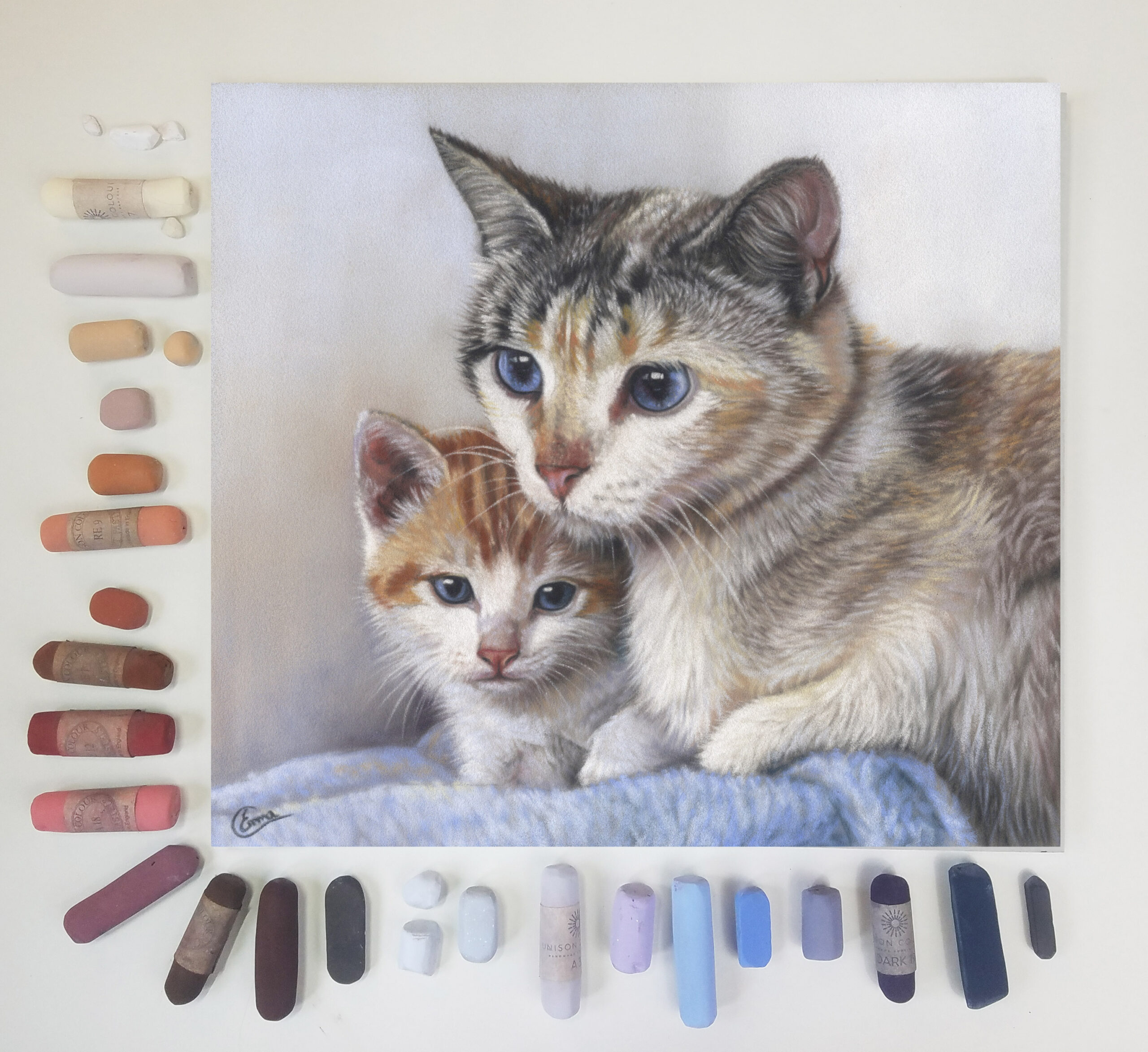
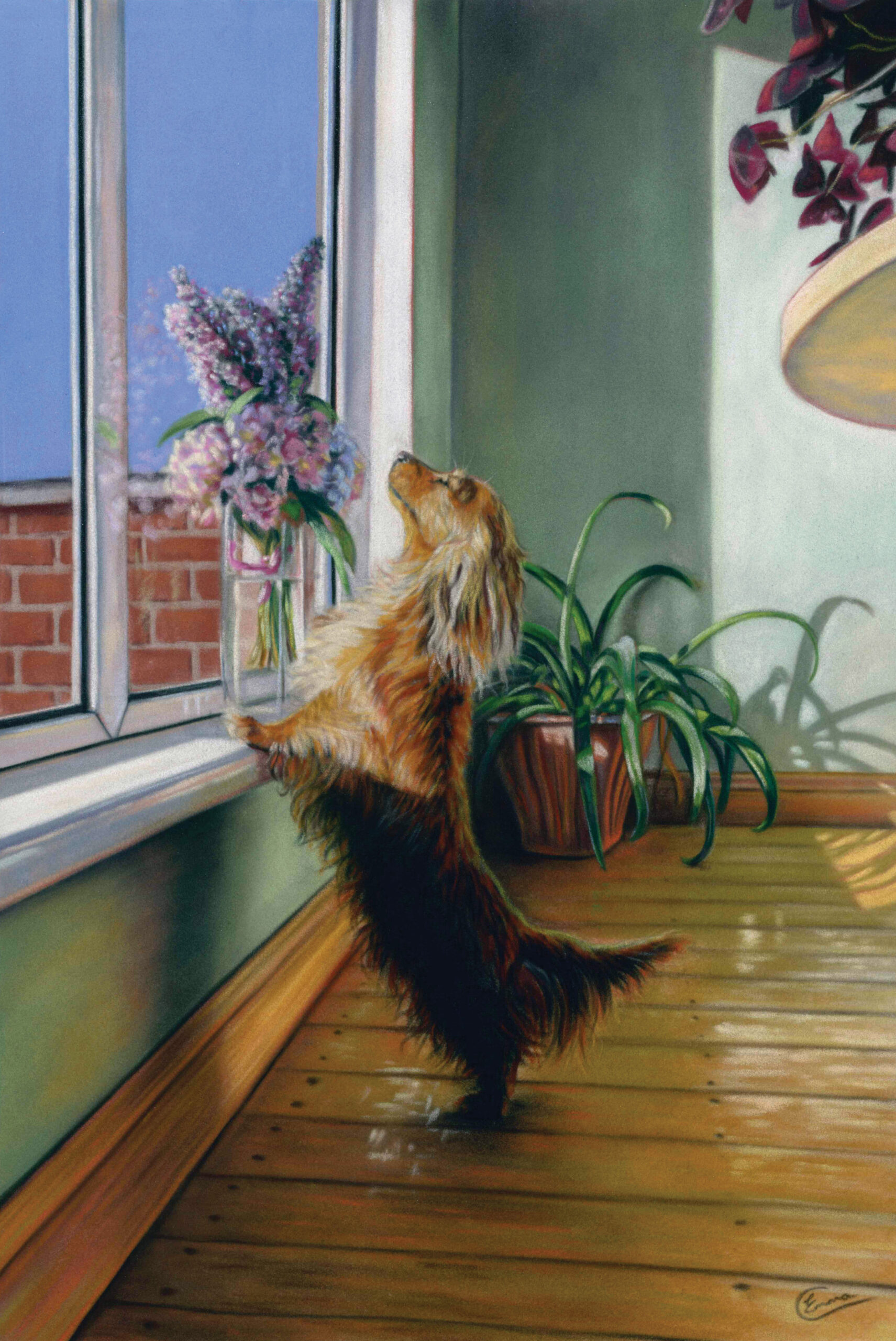
I aim to paint what I love when I choose a non-commissioned piece to work on. I spend many hours in nature observing and photographing wildlife and it is this connection with nature that has inspired all my recent work.
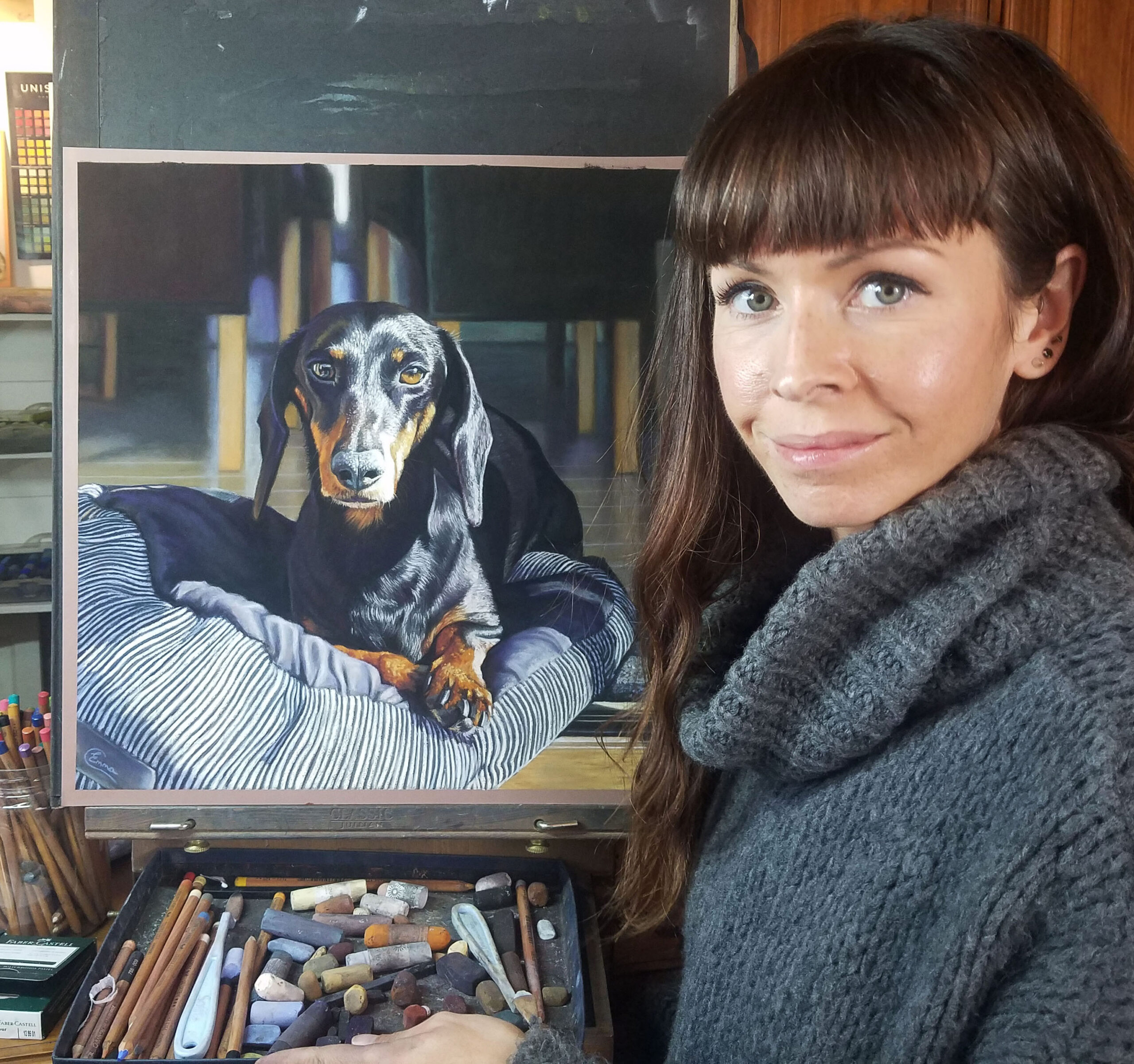
Go from feeling afraid to show off your pastel paintings to being proud of your skills in just three days. Join Emma Colbert and many more contemporary masters at Pastel Live, the world’s largest online art training event, September 18-20, 2024!


